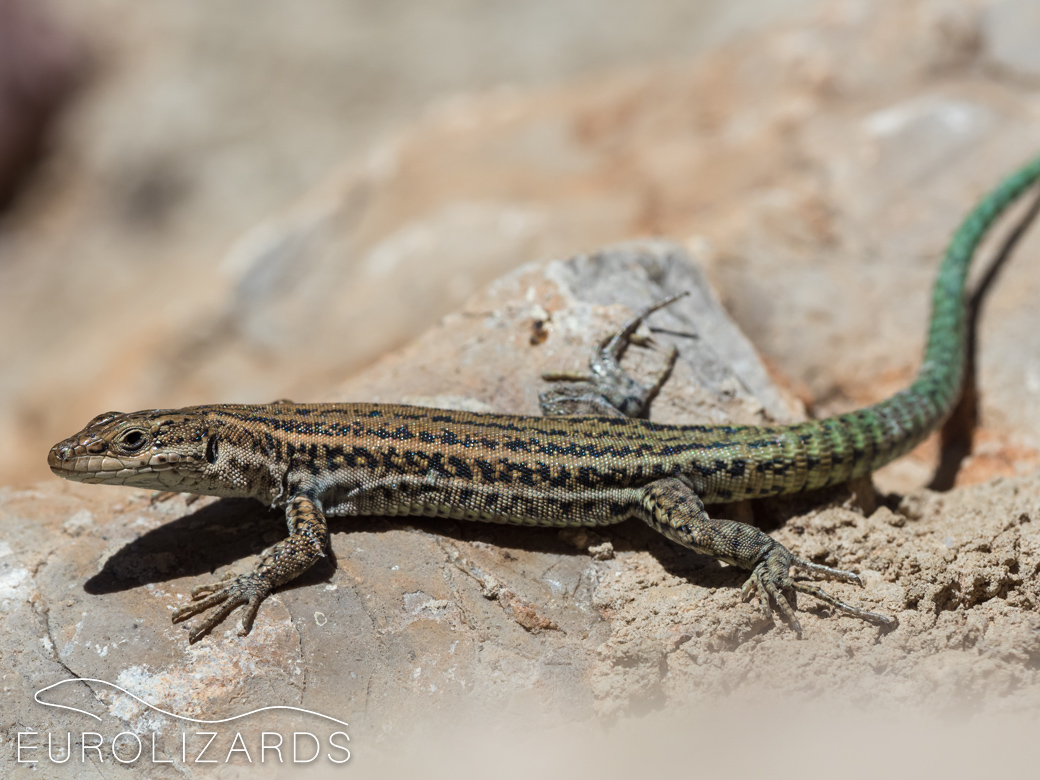Podarcis hispanicus - Spanish Wall Lizard
The Iberian Podarcis species (the so called "Podarcis hispanicus complex") are a fascinating group of lizards. They are actually like Darwin's finches: From one common anchestor they developed to several species which have occupied different ecological niches (see below). There are ground dwellers, granite rock specialists, allrounders… This may be a reason for scientists having done a pile of research on this species complex during the last years.

Among these species, Podarcis hispanicus has most extremely modified the basic Wall Lizard shape: It's a tiny and slender lizard with a flat head and sharp snout.
This species occurs in south-eastern Spain, only. It seems to be more tolerant with regard to dry and sparse habitats than other Podarcis species. In higher altitudes of the Baetic Mountain Range it is replaced by Podarics liolepis.
It frequently shows a conspicious stripe pattern; juveniles may have bright blue tails. In the contact zones with other species (Podarcis vaucheri, Podarcis virescens, Podarcis liolepis), it may be identified by the following morphological characters:
1. Vertebral line is bifurcated in the front part
2. Light and dark dorsolateral lines continue on the parietal plates
3. No bluish outer ventral scales






EUROLIZARDS - The Home of European Lizards! © Birgit & Peter Oefinger
